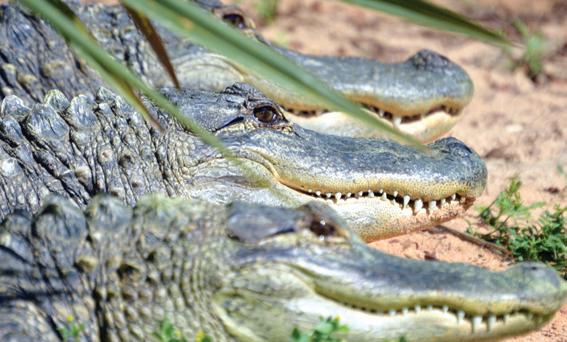
7 minute read
Saving Gators
UGA & Okefenokee Swamp Team up to Protect Native Alligators
By Kelly Simmons UGA Public Service and Outreach
Advertisement
apartnership between University of Georgia researchers and the Okefenokee Swamp Park focuses on conservation and education efforts needed to maintain the swamp’s native alligator population, which is vital to the economic vitality of the region.
On Aug. 27, UGA’s Marine Extension and Georgia Sea Grant and the Okefenokee Swamp Park (OSP) signed a commitment to continue its Alligator Education and Research Project, work that informs the OSP on conservation and management of the swamp, provides a better understanding of alligators, and enhances wildlife education.
“Applied research like this project in south Georgia is helping communities throughout the state address critical, local challenges,” said Jennifer Frum, vice president for UGA Public Service and Outreach. “This is a great example of how UGA is fulfilling its mission as Georgia’s land-grant and sea-grant institution.”
The OSP first began funding the project in 2017 and since then UGA scientists have conducted field research in the swamp to inventory the current alligator population by sex, age and size.
“The American alligator remains a conservation concern for a number of reasons, including human persecution and loss of native habitat,” said ecologist Kimberly Andrews, a faculty member with UGA Marine Extension and Georgia Sea Grant. “It is important for us to understand how these reptiles are adapting to survive in a human-dominated environment.”
Using satellite tags and cameras Andrews and her team at UGA have tracked seven adult alligators in the swamp, observing interactions between the sexes and age classes, courtship between males and females, maternal care and interaction with other species, such as bears or otters.
They regularly survey areas of the swamp to get approximate counts of the alligators there and their activity levels during day and night, from season to season and under changing environmental conditions.
So far, their research has shown that adult females and their guarded young, ages one to three years, are typically the most visible while the males are on the move, and mid-size subadults are more covert. Alligator activity and their visibility in the swamp is influenced by social structure and the presence of dominant individuals and changes in environmental conditions, such as temperature and rainfall.
UGA researchers have collected tissues samples from every
Ecologist Kimberly Andrews with a captured gator prior to its release. Photo provided by UGA Marine Extension & Georgia Sea Grant
animal they have caught. These samples will reveal more of the story about the swamp alligator’s diet and family tree.
“We are excited to renew our partnership with Dr. Andrews and UGA Marine Extension and Georgia Sea Grant,” said Dr. William Clark, an ophthalmologist in Waycross and chair of the OSP Board of Trustees. “So far, the results of the alligator research have already changed the way many people view this apex predator and we look forward to increasing our collaboration for years to come.”
Alligators are a conservation success story: they were the first species to be listed federally as an endangered species. Alligator farming replaced overharvesting from the wild that caused their decline and alligator populations began to rebound.
Alligators are apex predators, consuming a diversity of food sources and regulating prey populations. At the swamp, researchers have seen that a single adult alligator may eat prey that range in size from a moth to a deer. When alligators are lost from a system, this balance is lost and the ecosystem instability impacts many other species, including people who rely on predators to manage prey populations, such as deer, that pose risk to our safety when overabundant.
Alligators are the engineers of their economy, creating habitat that is used by other smaller animals. During drought, alligators create “wallows” or use den sites that retain water after it becomes scarce in other areas. These wallows can be critical for breeding habitat for frogs. The loss of alligators in some ecosystems has contributed to subsequent declines in amphibian populations in many of their habitats where they have been removed.
The Okefenokee is the largest blackwater swamp in North America, serving as the headwaters of the St. Mary’s and Suwanee rivers. Most of the swamp is located in Southeastern Georgia and is considered one of the seven natural wonders of the state. Protected largely by the Okefenokee National Wildlife Refuge and the Okefenokee Wilderness, the swamp has an array of habitats including cypress swamps, peat bogs, marshes, open lakes and wooded hammocks. The diversity of ecosystems encompasses an assortment of over 620 plant species (including four carnivorous plant species), 39 fish, 37 amphibian, 64 reptile, 234 bird and 50 mammal species.
Learn more about the project at gacoast.uga.edu/research/ major-projects/alligator-research/
Visitor Services Partner of the Okefenokee National Wildlife Refuge
Drink specials • Great menu items

Live bait Dockage Dry Storage
Fish Tales 727.3473 • Ft. McAllister Marina 727.2632 3203 Ft. McAllister Road • Richmond Hill, GA • SM 605
Canoe and Kayak Rentals Guided Paddling and Boat Tours Authentic Swamper Homestead Boardwalk and Observation Tower, Gift shop and Cafe www.okefenokeeadventures.com
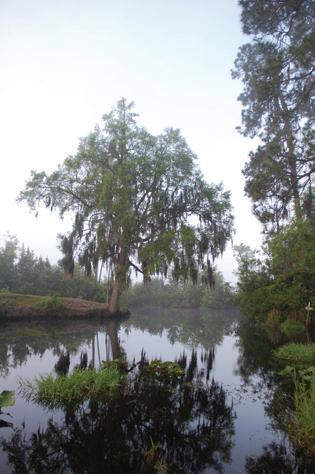

4159 Suwannee Canal Road Folkston, GA 866-THE-SWAMP
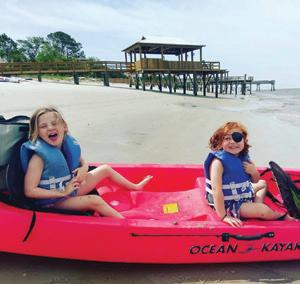

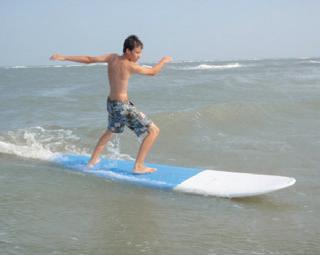
Surfing • Kayak • SUP
Instruction • Tours • Rentals 1 Old Hwy 80 • Tybee Island, Georgia • (912) 786-4000 • www.northislandkayak.com • Visit us on Instagram!
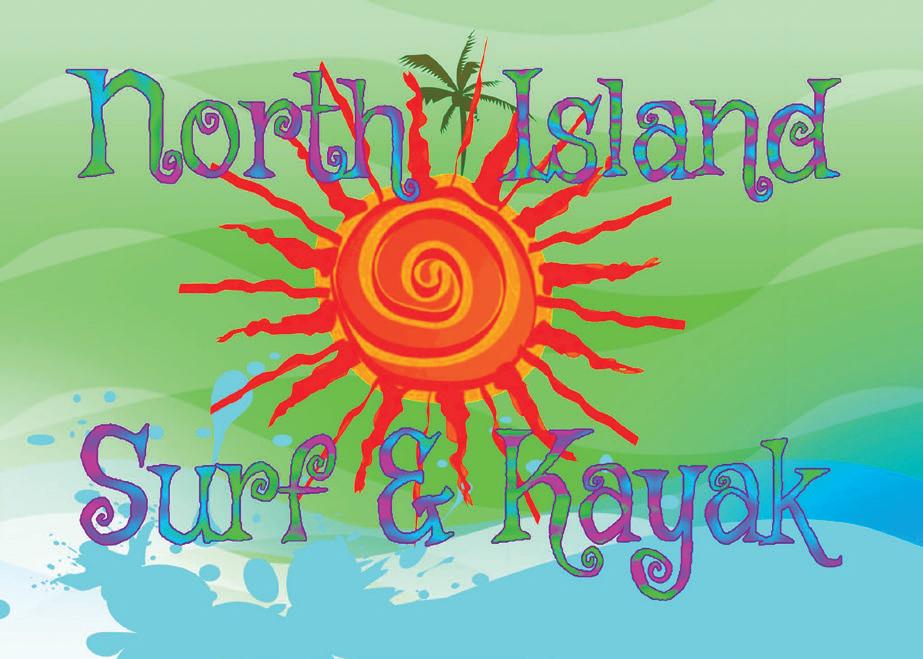
New birding & Wildlife Trail App Available
By Beth Quillian Communications/Outreach, GADNR

coast is easier and more engaging thanks to a new website and app features announced recently by the GADNR.
The launch of georgiabirdingtrails.com and the addition of a trail function to the Go Outdoors Georgia app are part of DNR Wildlife Resources Division efforts to expand its Georgia Birding and Wildlife Trails program. The upgrades offer improved accessibility to wildlife viewing resources and support Georgia’s strong interest in birding and other wildlife watching, activities that pack a $2 billion annual economic impact statewide.
The Colonial Coast Birding Trail, developed in 1999 and Georgia’s premier state wildlife trail, is the first trail updated under the new Birding and Wildlife Trails program.
The Colonial Coast Trail includes 17 sites stretching from Fort Pulaski National Monument and the beaches of Tybee Island south to Cumberland Island National Seashore and the swamps of the Okefenokee. Shorelines, salt marshes, old rice fields, woodlands, tidal rivers and freshwater wetlands offer an array of habitats that showcase unique communities of birds and other wildlife. The trail includes federal, state and local sites that provide the opportunity to encounter wildlife, connect with nature and visit historic places.
The Colonial Coast Trail’s wild blend of nature and history is especially evident at the Savannah-Ogeechee Canal Museum and Nature Center. Built between 1826 and 1830, the canal was used to transport crops and goods from inland plantations to the shipping port of Savannah. Connie Shreve, also known as Connie the Canoe Lady, is the master naturalist at the center.
“The native and non-native birds that visit the SavannahOgeechee Canal daily and seasonally are phenomenal,” Shreve said. “It's amazing seeing how many varieties of birds frequent the canal on their migration journeys."
The Georgia Birding and Wildlife Trails website introduces each trail site with access tips, a map, a list of amenities, wildlife highlights and a link to eBird hotspots. Wildlife viewing resources include a printable species checklist with seasonality data, as well as information on birding basics, Georgia Audubon chapters, citizen science projects, bird curricula and conservation organizations. A new program logo showcases the great blue heron, a familiar species found throughout the state.
The Colonial Coast Birding Trail has also been added to the free Go Outdoors GA app developed by Brandt Information Services. The mobile platform provides an on-the-go resource for trail users to learn about trail sites, get directions, keep a species checklist and browse recent eBird sightings. And even more upgrades are coming soon.
The app can be downloaded on mobile devices through the Apple or Google Play store.
While travel can be a challenge during the pandemic, getting outside is a great way to recreate responsibly and enjoy nature. Follow social distancing guidelines and check with individual trail sites before planning a trip to determine the latest visitation policies. Additional tips are available at responsible-recreation.org.
Visit georgiabirdingtrails.com to learn more about Colonial Coast Birding Trail sites, brush up on birding basics, download the mobile app and print a species checklist to carry with you. Hit the
Seeing wildlife while exploring historic sites along Georgia’s
trail and discover why so many people are Wild about Georgia!
Black-bellied whistling ducks. Photo by Tim Keyes, GADNR
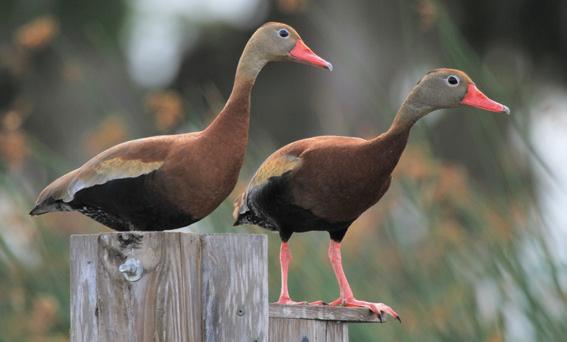
Three alligators basking in the sand. Photo by Clint Peacock, GADNR
